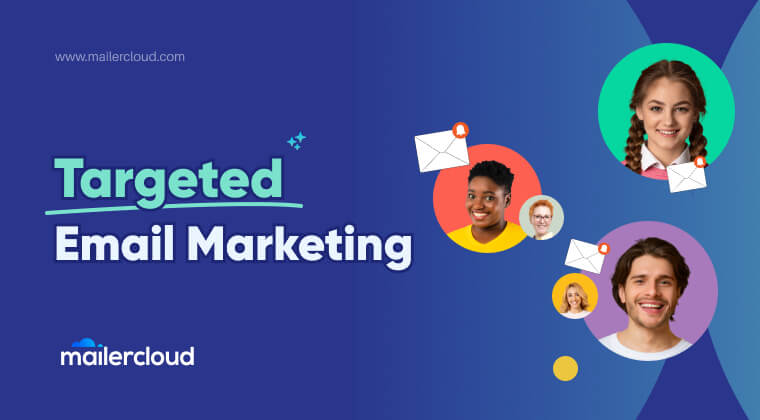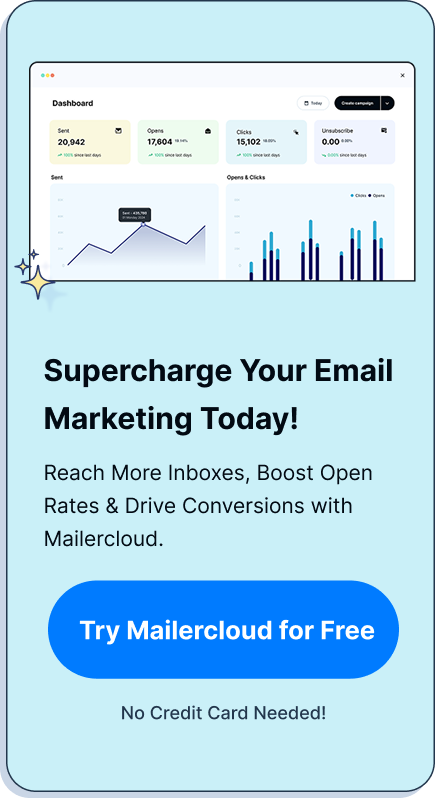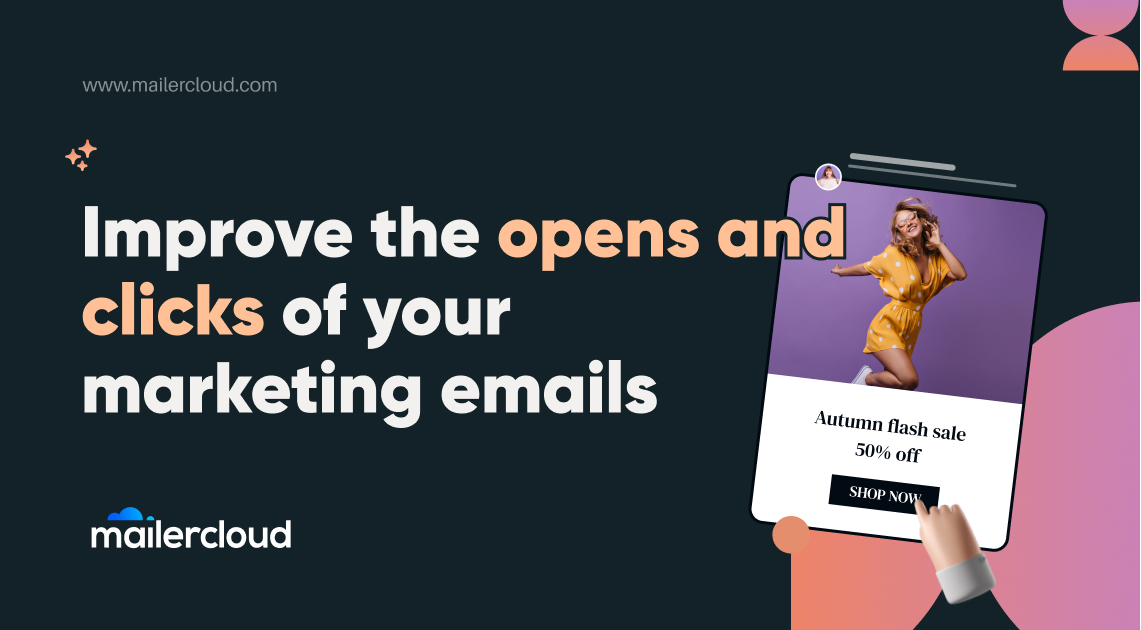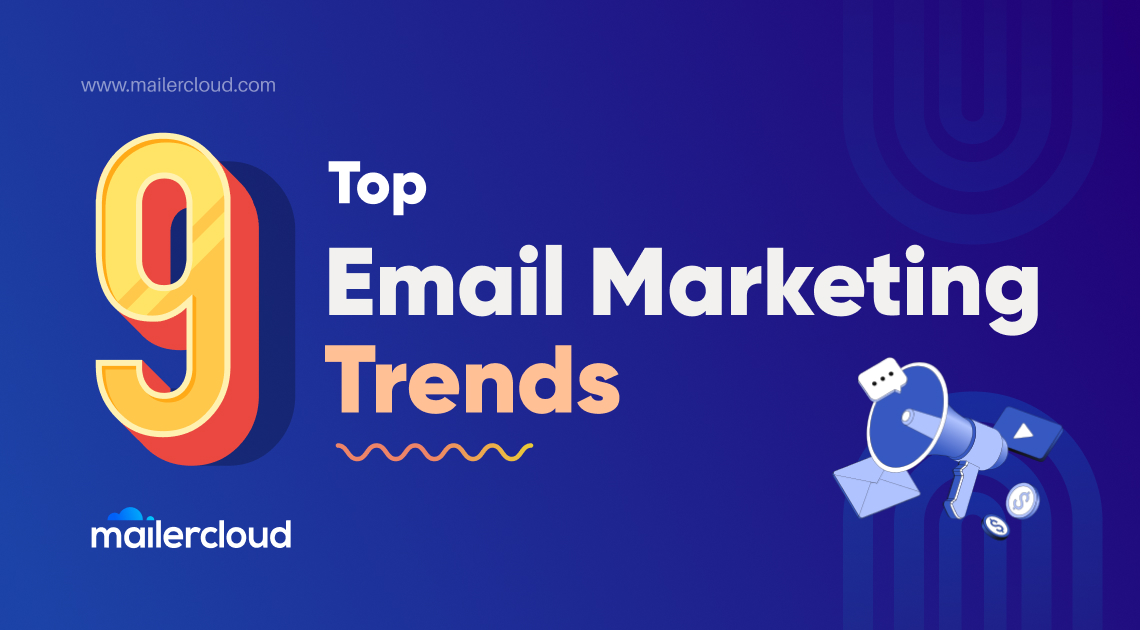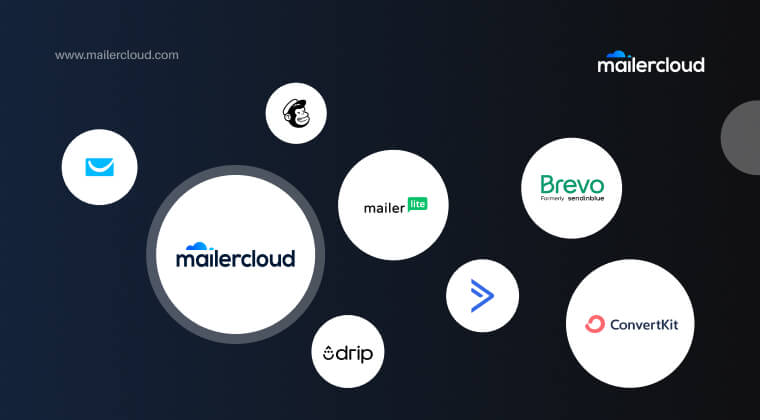Discover how a well-executed targeted email marketing campaign can significantly boost your business. With the right strategy, you can send personalized, relevant messages that resonate with each subscriber. This article is a valuable read for anyone looking to enhance their digital marketing efforts and reap the benefits of targeted email marketing.
Table of Contents
What is Targeted Email Marketing?
Targeted email marketing is the practice of sending marketing messages to specific segments of your email list. By using data and analytics, businesses can tailor their content to match the interests, behaviors, and needs of their subscribers, enhancing the relevance and effectiveness of their campaigns.
What Are the Benefits of Targeted Email Marketing?
The benefits of targeted email campaigns include higher engagement rates, improved customer retention, and increased revenue. By sending the right message to the right person at the right time, businesses can build stronger relationships with their audience and achieve better marketing results.
Targeted email marketing offers several benefits:
- Increased Relevance: By segmenting your audience and tailoring messages to specific groups, the content becomes more relevant to recipients, which boost your email engagement rates.
- Improved Conversion Rates: These emails are more likely to resonate with recipients, prompting higher conversion rates as the offers are aligned with the interests or needs of the audience.
- Better ROI: With higher engagement and conversion rates, it often yields a better return on investment compared to non-targeted campaigns.
- Enhanced Customer Relationships: Personalized content helps build stronger relationships with customers as they feel the brand understands their preferences and requirements.
- Reduced Unsubscription Rates: Relevant content is less likely to be perceived as spam, leading to lower unsubscription rates.
- Efficient Use of Resources: By focusing on segments that are more likely to convert, resources are not wasted on broad groups with low engagement.
- Data Collection and Insights: Targeted campaigns generate data that can provide insights into customer behavior and preferences, helping to further refine marketing strategies. Paired with fast web scraping proxies, marketers can gather real-time competitive and audience data securely, enabling more precise targeting and improved decision-making
- Testing and Optimization: It’s easier to test different aspects of an email campaign (like subject lines, offers, or design elements) within specific segments and optimize based on performance.
- Higher Deliverability Rates: Sending relevant content can improve your sender reputation, which in turn can lead to better email deliverability.
- Competitive Advantage: By delivering more personalized and relevant content, a brand can stand out in a crowded inbox, offering a competitive edge over less targeted competitors.
How Can You Send Targeted Emails That Engage Subscribers?
To engage email clients, ensure that your targeted emails are valuable, informative, and attention-grabbing. Craft compelling subject lines, use high-quality visuals, and include clear calls-to-action (CTAs) to encourage readers to take the next step.
- Segment Your Email List:
- Group your subscribers based on demographics, behavior, purchase history, or engagement level.
- Personalize the Email Content:
- Use the subscriber’s name.
- Tailor content based on segmentation.
- Craft Engaging Subject Lines:
- Keep them short and intriguing.
- Use action words and personalization.
- Design for Readability:
- Use a responsive design.
- Include white space and divide content into sections.
- Provide Value:
- Share useful information.
- Include exclusive offers or insights.
- Include a Clear Call-to-Action (CTA):
- Make it stand out.
- Keep it simple and direct.
- Test and Optimize:
- A/B test different elements using email marketing software.
- Analyze open and click-through rates to adjust strategy.
- Use Marketing Automation and Trigger-Based Emails:
- Welcome email to subscribers newly joined.
- Abandoned cart reminders for shoppers that work as a re-engagement email.
- Respect Subscriber Preferences:
- Allow them to set the frequency and type of emails they receive.
- Monitor and Clean Your Email List Regularly:
- Keep your list up-to-date to maintain deliverability.
By implementing these strategies, you can create more targeted and engaging email campaigns that resonate with your subscribers.
How Does Email List Segmentation Work?
Segmentation involves dividing your email list into smaller groups based on certain criteria, such as demographics, purchase history, or engagement level. These segments can then receive targeted emails that are more likely to be of interest to them, increasing the chances of a positive response.
Here’s the general process:
- Data Collection: Gather information about your subscribers through sign-up forms, website interactions, purchase history, and other data sources. Marketing teams also use lead scraping to enrich their customer profiles by collecting additional data from public sources, like company information from LinkedIn, industry trends from news sites, and other data.
- Segmentation Criteria Identification: Decide on the factors you’ll use to segment your audience. Common criteria include demographics (age, gender, location), behavior (purchase history, email engagement), and psycho-graphics (interests, values).
- Segment Creation: Break down your email list into segments based on the chosen criteria. For instance, you could have segments for frequent buyers, newsletter-engaged subscribers, or region-specific customers.
- Targeted Campaign Development: Create email marketing campaigns tailored to each segment’s characteristics and interests.
- Personalization: Customize the emails further by using personal information such as the subscriber’s name or past interactions with your brand.
- Testing: Run A/B tests within your segments to determine which email variations perform the best.
- Analysis and Adjustment: After each campaign, analyze metrics like open rates, click-through rates, and conversion rates to understand segment responses and refine future segmentation strategies.
Why Should You Personalize Your Email Content?
Personalization goes beyond addressing a subscriber by their first name. It includes tailoring the email content so that it speaks directly to the individual’s preferences and behaviors. Personalized email subject lines can significantly improve open rates and click-through rates, leading to better conversion rates.
1. Increased Engagement:
- Personalized emails have higher open rates.
- They also have better click-through rates.
2. Improved Relevance:
- Content tailored to the recipient feels more relevant.
- It meets the individual needs and interests of each subscriber.
3. Enhanced Customer Relationships:
- Personalization helps build stronger connections with customers.
- It shows that you value them as individuals.
4. Better Conversion Rates:
- Personalized emails can lead to higher conversion rates.
- They encourage recipients to take action that is aligned with their interests.
5. Competitive Advantage:
- It can set you apart from competitors who send generic communications.
6. Reduced Unsubscribe Rates:
- Personalization reduces the likelihood of subscribers opting out.
- It keeps content applicable to the recipient’s preferences.
7. Efficient Targeting:
- It allows for segmentation of your audience.
- You can send targeted messages based on behavior, demographics, or past purchases.
8. Higher ROI:
- Personalization can lead to a better return on investment.
- It ensures that marketing efforts are not wasted on disinterested parties.
9. Customer Retention:
- Personalized promotional emails can improve customer loyalty and retention.
- They often encourage repeat purchases of your product or service by staying relevant to the recipient.
What Tools Do You Need for Effective Email Segmentation?
Effective email segmentation requires tools that can collect and analyze data, manage your email list, and automate the sending process. Many email marketing platforms offer these features, making it easier for businesses to create and send targeted campaigns.
You’ll need the following tools and resources:
Email Service Provider (ESP)
- Advanced Features: Look for an ESP that offers advanced segmentation features.
- Integration Capabilities: The ability to integrate with your CRM or other data sources is crucial.
Customer Relationship Management (CRM) Software
- Data Collection: A CRM automotive that captures comprehensive customer data.
- Segmentation Abilities: It should allow for the creation of segments based on the data collected.
Analytics Tools
- Behavior Tracking: Tools that can track user behavior on your website or within your email marketing service app.
- Engagement Metrics: Tools that measure email opens, clicks, and interactions.
Data Enrichment Tools
- Demographic Data
- Firmographic Data
Survey Tools
- To collect additional data from your subscribers to refine your segments.
Spreadsheet Software or Database
- For organizing and analyzing data manually if needed.
Automation Tools
- To automate the process of segmenting and targeting different lists.
These tools combined will enable you to segment your right email list effectively, allowing for more targeted and personalized email campaigns.
What Are Some Best Practices for Creating a Targeted Email Marketing Campaign?
Best practices to create targeted email marketing campaigns include setting clear goals, understanding your audience, testing different approaches, and continuously refining your strategy based on performance data.
- Understand Your Audience
- Segment your list based on behavior and demographics.
- Create buyer personas to tailor your content.
- Set Clear Objectives
- Define what you aim to achieve with your campaign (e.g., leads, sales, engagement).
- Craft Compelling Subject Lines
- Keep them brief, clear, and enticing.
- Personalize when possible.
- Avoid spam triggers.
- Personalize Your Emails
- Use recipient’s name.
- Tailor content to segment interests or past behaviors.
- Design for All Devices
- Use responsive design to ensure readability on any device.
- Optimize images for fast loading.
- Provide Value
- Share useful content relevant to the audience’s interests.
- Offer exclusive deals or information.
- Include a Clear Call-to-Action (CTA)
- Use action-oriented language.
- Make it visually standout.
- Test and Optimize
- A/B test different elements of your email copy(e.g., subject lines, CTAs).
- Use analytics to track performance and make data-driven decisions.
- Maintain Email List Hygiene
- Regularly clean your list of inactive subscribers.
- Ensure you comply with anti-spam laws (like GDPR or CAN-SPAM).
- Automate When Appropriate
- Implement drip campaigns for new subscribers.
- Use triggers for personalized automated responses.
How Do You Measure the Success of Your Targeted Email Campaigns?
To measure the success of your email campaigns, track key metrics such as open rates, click-through rates, conversion rates, and return on investment (ROI). Use this data to make informed decisions about future campaigns.
Here are some of the most important metrics to track:
- Open Rate: The percentage of recipients who opened your email. This indicates how well your subject line performed.
- Click-Through Rate (CTR): The percentage of recipients who clicked on one or more links contained in your email. This shows how engaging your content and calls to action are.
- Conversion Rate: The percentage of recipients who completed a desired action after clicking on a link in your email, such as making a purchase or signing up for a webinar.
- Bounce Rate: The percentage of emails that could not be delivered to the recipient’s inbox. High bounce rates can harm your sender reputation.
- Unsubscribe Rate: The rate at which people are opting out of your email list. A high rate may indicate issues with your content or frequency of emails.
- List Growth Rate: How quickly your email list is growing. This metric helps you gauge the long-term viability of your email marketing.
- Email Sharing/Forwarding Rate: The rate at which recipients are sharing your content with others, indicating the value and shareability of your content.
- Overall ROI: The overall return on investment for the campaign. This is calculated by comparing the revenue generated from the campaign against the cost of running it.
- Spam Complaints: The number of recipients who marked your email as spam. High numbers can affect deliverability.
The Future of Targeted Email Marketing: Trends to Watch
The future of targeted email marketing is likely to involve more advanced data analysis, artificial intelligence (AI), and personalized automation. Staying abreast of these trends will ensure that your email marketing efforts remain cutting-edge.
1. Personalization and Hyper-Personalization
Trend: Enhanced personalization through data analytics and AI to deliver highly relevant content.
Impact: Higher engagement rates as emails resonate more with individual preferences and behaviors.
2. Artificial Intelligence and Machine Learning
Trend: AI and ML algorithms predict optimal sending times, subject lines, and content.
Impact: Improved open rates and conversions as emails become smarter and more targeted.
3. Interactive Emails
Trend: Use of interactive elements like surveys, polls, and sliders within emails using AMP features.
Impact: Increased user engagement and valuable feedback directly from the email environment.
4. Privacy and Data Protection
Trend: Stricter data protection laws and growing concern for privacy.
Impact: Need for transparent data use policies and secure handling of subscriber information.
5. Email Design
Trend: Minimalist, mobile-first designs with a focus on readability and accessibility.
Impact: Better user experience leading to longer engagement times and reduced bounce rates.
6. Integration of Email with Other Marketing Channels
Trend: Seamless integration with social media, SMS, and other marketing platforms.
Impact: Consistent brand messaging across channels and more touchpoints for customer interaction.
7. Predictive Analytics
Trend: Leveraging past user behavior to forecast future actions and tailor content accordingly.
Impact: More effective targeting and timing of email campaigns to maximize ROI.
8. User-Generated Content
Trend: Incorporation of reviews, testimonials, and user stories into email campaigns.
Impact: Builds trust and credibility, potentially leading to higher conversion rates.
Trend: Sophisticated automation workflows that trigger based on user actions or milestones.
Impact: Timely and relevant communication that nurtures leads and retains customers without manual effort.
10. BIMI (Brand Indicators for Message Identification)
Trend: Adoption of BIMI to display company logos next to the email in the inbox.
Impact: Enhanced brand recognition and trust, which may lead to higher open rates.
Summary
- Targeted email marketing helps deliver relevant content to your target audience.
- Email list segmentation allows for precise targeting.
- Personalization increases engagement rates.
- Benefits include higher ROI and better customer retention.
- Using email marketing tools when you send email can enhance segmentation capabilities.
- Best practices involve clear goals and continuous testing.
- Metrics help measure campaign success.
- Future trends include AI and advanced data analysis.
Lina is a content writer with a passion for reading, writing, and cooking. She aims to explore the world of words and flavors. With a deep love for literature and a knack for creating mouthwatering recipes, she strive to engage and inspire others through her work.





























